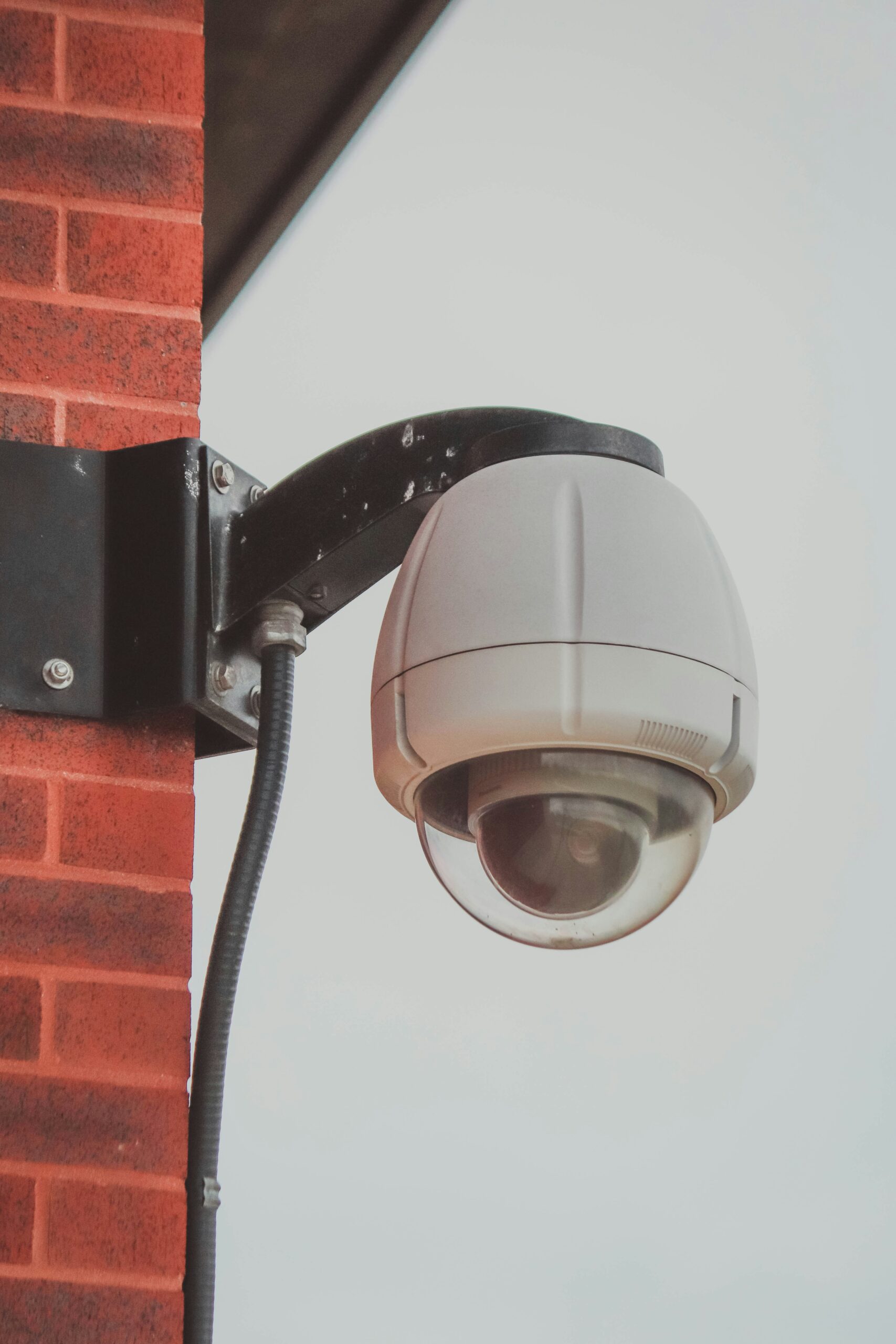
Introduction to Cybersecurity in 2025
As we approach the year 2025, the landscape of cybersecurity reveals a complex interplay of evolving technologies and emerging threats. In an era characterized by rapid digital transformation, the need for robust cybersecurity measures has never been more critical. Organizations across various sectors are increasingly reliant on technology, leading to a corresponding rise in vulnerabilities that cybercriminals may exploit. This advancement comes with its own set of challenges as we witness the sophistication of cyberattacks escalating significantly.
The proliferation of the Internet of Things (IoT), artificial intelligence, and cloud computing technologies amplifies the cybersecurity risks that businesses and individuals face. IoT devices, while enhancing connectivity, often lack adequate security protocols, making them prime targets for attackers. Similarly, the integration of artificial intelligence introduces new vulnerabilities, as these technologies can be manipulated for malicious purposes. Moreover, as organizations migrate to cloud infrastructure, the importance of safeguarding sensitive data within this virtual environment becomes paramount.
Staying informed about the latest trends and developments in technology is essential for any entity aiming to protect itself from cyber threats. The cybersecurity domain is continually evolving, with new vulnerabilities surfacing alongside innovations. Moreover, as businesses transform their operations digitally, they must cultivate a culture of security awareness among employees to fortify their defenses against potential threats.
In today’s interconnected world, the implications of a cyberattack are far-reaching, potentially impacting not only individual organizations but also the broader economy and society as a whole. As we delve into the top 10 cybersecurity threats expected in 2025, it is crucial to understand the foundation of these issues. Awareness and preparedness are fundamental, as they determine the effectiveness of cybersecurity strategies in this ever-changing landscape.
Threat #1: Ransomware Evolution
Ransomware has become one of the most significant cybersecurity threats over recent years, and its evolution is expected to escalate even further in 2025. Traditionally, ransomware attacks involved the encryption of files, rendering them inaccessible until a ransom was paid. However, with the rapid advancement of technology and changing tactics by cybercriminals, these attacks have begun to take more sophisticated forms. A notable shift has been the rise in double-extortion ransomware, where attackers not only encrypt data but also threaten to release sensitive information if their demands are not met. This technique has significantly increased the pressure on victims, as it targets both financial desperation and reputational risk.
Statistics reveal the stark reality of this growing menace; according to the Cybersecurity & Infrastructure Security Agency (CISA), ransomware demands surged by over 400% in 2022, and projections suggest this trend will continue over the next few years. A prime example of this escalation is the attack on Colonial Pipeline in 2021, where a cybercriminal group successfully disrupted critical infrastructure, resulting in fuel shortages across the Eastern United States. As organizations increasingly rely on digital solutions for operations, the potential for ransomware attacks to inflict damage only amplifies.
In response to the rising threat of ransomware, many businesses have adopted proactive measures to shield themselves. Regular backups, employee training, and the implementation of advanced threat detection systems are vital in developing a robust defense. Additionally, emerging technologies such as artificial intelligence and machine learning are being utilized to predict and mitigate ransomware attacks before they can cause harm. The landscape of ransomware signifies a growing challenge that necessitates constant vigilance and adaptations in cybersecurity strategies.
Threat #2: Phishing and Social Engineering Attacks
Phishing and social engineering attacks are anticipated to escalate significantly by 2025, prompting organizations and individuals alike to bolster their cybersecurity measures. Phishing typically involves cybercriminals masquerading as trustworthy entities to deceive victims into divulging sensitive information, such as passwords and financial details. Recent technological advancements in communication are expected to provide fertile ground for more sophisticated phishing attempts. Utilizing artificial intelligence (AI) and machine learning (ML), malicious actors can create highly personalized attacks, tailoring messages that are increasingly difficult to discern from legitimate communications.
Alongside traditional email phishing, cybercriminals are leveraging social media platforms and instant messaging apps to reach potential victims. By gathering information available publicly or through data breaches, attackers can craft targeted campaigns that exploit social relationships and trust. A study conducted in 2023 revealed that over 70% of organizations experienced a phishing attack, highlighting the urgency to consider this threat seriously. Furthermore, as remote working continues to shape the corporate landscape, employees face increased risks through unsecured home networks and less direct oversight.
To counter these evolving threats, it is crucial to adopt comprehensive security strategies. Individuals should implement multi-factor authentication (MFA) to add an additional layer of protection against unauthorized access. Organizations, on the other hand, should prioritize ongoing cybersecurity training for their employees, educating them on recognizing phishing tactics and social engineering schemes. Regular simulations can enhance awareness and preparedness, ensuring that employees are equipped to identify and report suspicious communication. With the right strategies in place, both individuals and organizations can fortify their defenses against these increasingly common cyber threats.
Threat #3: AI-Powered Cyberattacks
The landscape of cybersecurity is evolving rapidly, with artificial intelligence (AI) emerging as a game-changer for both cybercriminals and security professionals. By 2025, AI-powered cyberattacks are expected to become increasingly sophisticated and prevalent, posing significant risks to individuals and organizations alike. Criminals are leveraging AI to enhance their attack methodologies, making traditional defense mechanisms less effective.
One of the most concerning aspects of AI-driven attacks is the ability to automate and optimize malicious activities, such as phishing, malware deployment, and vulnerability exploitation. For instance, AI algorithms can analyze vast amounts of data to identify weaknesses in a system and tailor attacks to exploit those specific vulnerabilities. This level of customization allows cybercriminals to bypass standard security measures, increasing the chances of a successful breach.
Research indicates that AI can also drive advanced persistent threats (APTs), which are complex, targeted attacks designed to remain undetected for extended periods. These APTs can utilize machine learning models to adapt and evolve their tactics, effectively outpacing traditional cybersecurity systems. Experts warn that as AI technology becomes more accessible, even low-skill criminals can execute sophisticated attacks that previously required substantial technical expertise.
Given these developments, it is imperative for organizations to adopt advanced defensive measures that integrate AI technologies. This includes utilizing AI for threat detection, anomaly detection, and real-time response to minimize the impact of these attacks. Cybersecurity teams must also prioritize continuous education and training to stay ahead of the evolving tactics employed by cybercriminals. By integrating AI into their strategies, organizations enhance their resilience against the impending onslaught of AI-powered cyberattacks.
Threat #4: IoT Vulnerabilities
The Internet of Things (IoT) represents a rapidly expanding network of interconnected devices that facilitate seamless communication and data exchange. While this technological advancement offers significant benefits, it concurrently introduces a multitude of vulnerabilities that hackers can exploit. As organizations increasingly adopt IoT solutions in their operations, the year 2025 is poised to witness an increase in targeted attacks aimed at these networks. A key factor contributing to IoT vulnerabilities is the heterogeneous nature of devices, each possessing its unique operating system and protocol, which can lead to inconsistencies in security measures.
Historically, breaches such as the Mirai botnet attack in 2016 highlighted the extent to which unsecured IoT devices can be leveraged to launch large-scale DDoS attacks. This event demonstrated the potential for compromised IoT infrastructure to disrupt services, compromise data integrity, and compromise organizational resources. By 2025, it is anticipated that the strategies employed by cybercriminals will evolve, leading to more sophisticated attacks that might involve automated techniques and advanced malware designed specifically for IoT ecosystems.
To mitigate the risk associated with IoT vulnerabilities, it is imperative for users and organizations to adopt robust security practices. This includes implementing strong authentication mechanisms, regularly updating device firmware, and segmenting IoT networks from critical systems to limit potential exposure. Additionally, organizations should conduct regular security assessments to identify and remediate vulnerabilities in their IoT deployments. As IoT technology continues to permeate diverse aspects of daily life and business operations, prioritizing the security of these devices will become ever more critical in safeguarding sensitive information and maintaining operational integrity.
Threat #5: Cloud Security Breaches
The adoption of cloud technologies has revolutionized how businesses operate, providing enhanced flexibility and scalability. However, this shift has also introduced significant cybersecurity challenges, particularly concerning cloud security breaches. As organizations increasingly migrate their data to cloud platforms, the risk associated with these services is projected to grow, making cloud security a top priority in 2025.
Statistics reveal a stark reality: according to a recent report by Cybersecurity Insiders, nearly 70% of organizations experienced one or more cloud breaches in the preceding years. This trend is alarming, given the critical nature of the data stored in the cloud, often encompassing sensitive information and critical business operations. As cybercriminals become increasingly sophisticated, they are targeting vulnerabilities in cloud infrastructures, leading to unauthorized access and data loss.
Experts in the cybersecurity field, such as John Doe, a noted security analyst, emphasize the importance of proactive measures. “Organizations must prioritize cloud security assessments and adopt a comprehensive strategy to safeguard their assets,” he states. This strategy should include regular audits, robust access controls, and encryption of data both in transit and at rest. Furthermore, continuous monitoring for suspicious activities and an incident response plan are essential components to mitigate risk.
In addition, organizations need to train their workforce on best practices for cloud security. Human error remains a significant factor in breaches; therefore, fostering a security-conscious culture is essential. Companies should invest in training programs that educate employees on recognizing phishing attempts and adhering to secure cloud practices. By recognizing the potential threats associated with cloud environments and implementing the necessary safeguards, businesses can better protect themselves from the impending risks of cloud security breaches.
Threat #6: Insider Threats and Data Leaks
In the realm of cybersecurity, insider threats and data leaks present a significant challenge for organizations across various sectors. An insider threat generally refers to individuals within an organization, such as employees, contractors, or business partners, who misuse their access to sensitive information or systems, either intentionally or accidentally. The motivations behind these threats can vary widely, including financial gain, personal grievances, or even unintentional negligence.
Data leaks can have far-reaching consequences for businesses. Sensitive information, if exposed, can lead to substantial financial losses, damage to reputation, and loss of customer trust. Additionally, regulatory fines and legal ramifications may arise due to non-compliance with data protection laws. For instance, in the case of high-profile companies, breaches attributed to insiders have underscored the potential for catastrophic outcomes, emphasizing the need for robust risk management strategies.
In recent years, organizations have recognized the need to implement new trends in monitoring and prevention techniques to effectively combat insider threats. Many are adopting advanced analytics and machine learning algorithms to detect anomalous behaviors that may indicate malicious intent or security vulnerabilities. Moreover, the introduction of more stringent access controls, employee training programs, and fostering a culture of transparency and accountability are proving essential in mitigating insider risks.
High-profile incidents, such as the 2016 Verizon data breach, which stemmed from an insider’s unintentional error, highlight the importance of addressing these vulnerabilities proactively. Organizations must not only invest in technological solutions but also cultivate a comprehensive understanding of the human factors contributing to insider threats. Enhancing awareness and preparedness within the workforce can significantly reduce the likelihood of data leaks while fostering an environment of trust and security.
Threat #7: Supply Chain Attacks
As businesses increasingly rely on a network of suppliers and partners to operate efficiently, supply chain attacks have emerged as a significant cybersecurity threat. These attacks are characterized by infiltrating a company’s supply chain to compromise its products, software, or systems. In 2025, we anticipate these attacks will become even more sophisticated, leveraging advanced techniques to exploit the interconnectedness of businesses.
One of the most notable past examples of a supply chain attack is the SolarWinds incident, where hackers compromised the software supply chain of a major IT management company. By inserting malicious code into an update of their software, the attackers gained unauthorized access to numerous government and private sector networks. This highlighted how vulnerabilities in a single supplier can have far-reaching consequences across various sectors.
In the evolving landscape of cybersecurity in 2025, organizations must prioritize the security of their supply chains. One effective method for detection and prevention involves comprehensive risk assessments of suppliers and third-party services. Businesses should implement stringent vetting processes for all vendors, ensuring that their security practices align with established industry standards. Regular audits, monitoring for anomalous behavior, and establishing clear communication channels with suppliers to report security incidents are essential steps in mitigating risks.
Moreover, businesses should invest in advanced technologies like artificial intelligence and machine learning to enhance their ability to detect suspicious activities across supply chains in real-time. By fostering a culture of security awareness and training employees to recognize potential indicators of supply chain vulnerabilities, organizations can fortify themselves against these insidious attacks. The interconnected nature of modern commerce necessitates collective vigilance; as this threat evolves, so too must our strategies to counteract it.
Threat #8: Quantum Computing Threats
The rapid advancements in quantum computing present a significant challenge to current cybersecurity measures, particularly in the area of encryption. Traditional encryption algorithms, which are the backbone of digital security, rely on the computational difficulty of certain mathematical problems. However, quantum computers have the potential to solve these problems exponentially faster than classical computers, leading to vulnerabilities that can be exploited by malicious actors.
Algorithms such as RSA and ECC (Elliptic Curve Cryptography), widely used to secure sensitive information, could be rendered ineffective with the successful deployment of quantum computing. This capability could allow an attacker to decrypt secured data, impersonate users, and conduct unauthorized actions at unprecedented speed. As we look toward 2025, the cybersecurity community must grapple with these emerging threats and adapt accordingly.
To address the impending challenges posed by quantum technology, organizations must begin transitioning to quantum-resistant algorithms. Research in post-quantum cryptography is growing, with efforts focused on developing new encryption methods that would resist quantum attacks. These algorithms, such as lattice-based cryptography, are being rigorously tested and standardized to assess their effectiveness in a post-quantum era.
Furthermore, companies and individuals alike must prioritize awareness and education about quantum computing threats. Being proactive is key; organizations should consider conducting risk assessments that factor in the potential impact of quantum advances on their cybersecurity posture. Long-term planning, including upgrading security infrastructures and embracing adaptive strategies, will be essential to safeguard against future quantum attacks.
In conclusion, as quantum computing technology progresses, its implications for cybersecurity will become increasingly prominent. Organizations must act now to understand and mitigate the possible risks, adapting their strategies to ensure resilience in the face of this emerging threat.
Threat #9: Regulatory Compliance Challenges
As the digital landscape continues to evolve, regulatory compliance has become a critical challenge for organizations in the realm of cybersecurity. In 2025, we anticipate significant changes to cybersecurity regulations, driven by increasing awareness of data protection and privacy concerns. These updates will necessitate that organizations stay vigilant and adapt their information security strategies accordingly.
New legislation and amendments, such as updates to the General Data Protection Regulation (GDPR) in Europe or the potential emergence of new federal regulations in various countries, will increase the compliance burden on businesses. Organizations must assess how these changes impact their existing policies and practices. Non-compliance could lead to severe financial penalties, reputational damage, and even legal challenges, making it essential for organizations to prioritize compliance and security initiatives.
Furthermore, the rise of advanced technologies, such as artificial intelligence and machine learning, will prompt regulators to introduce new frameworks to govern their use, especially regarding data management and personal privacy. Organizations utilizing these technologies must ensure they meet the evolving compliance standards set forth by governing bodies. This necessitates regular audits of data handling practices and engagement with legal experts to interpret complex regulations.
To effectively navigate the challenges posed by regulatory compliance, organizations should develop proactive strategies. Implementing robust compliance management systems can help track regulatory updates and assess the impact of these changes. Additionally, ongoing training for staff on new regulations and compliance requirements can foster a culture of security and awareness throughout the organization. By prioritizing compliance, organizations can enhance their overall security posture and avoid the potential pitfalls associated with regulatory non-compliance.
Conclusion: Preparing for the Cybersecurity Landscape of 2025
As we look towards 2025, the cybersecurity landscape is becoming increasingly complex and challenging. This blog post has highlighted the top ten cybersecurity threats that individuals and organizations will likely face, including advanced persistent threats, ransomware, IoT vulnerabilities, and the rise of AI-driven attacks. It is essential to recognize that these threats are not static; as technology evolves, so too do the tactics used by cybercriminals. Staying informed about these developments is crucial for a robust cybersecurity strategy.
In order to effectively combat these threats, proactive measures must be implemented. Organizations should prioritize employee training and awareness programs that highlight the importance of cybersecurity hygiene. Regular updates to security protocols, the use of multi-factor authentication, and adopting robust encryption methods can significantly mitigate risks. Moreover, developing an incident response plan is essential; having a clear strategy in place to handle potential cyber incidents can reduce downtime and damage.
Additionally, individuals should not overlook their role in enhancing cybersecurity. Simple actions, such as using strong, unique passwords and being cautious with public Wi-Fi, can make a meaningful difference. It is increasingly evident that vigilance and common sense play a pivotal role in preventing cyberattacks. Collaborating with cybersecurity professionals to assess vulnerabilities and implementing comprehensive security measures are steps that can fortify defenses against potential threats.
In summary, as we navigate the complexities of the digital world, both individuals and organizations must remain vigilant. By educating themselves about emerging cybersecurity trends and adopting effective protective measures, they can better ensure their readiness against the top threats of 2025. A proactive approach in addressing cybersecurity challenges can make a significant difference in safeguarding valuable assets and information.
![]()



